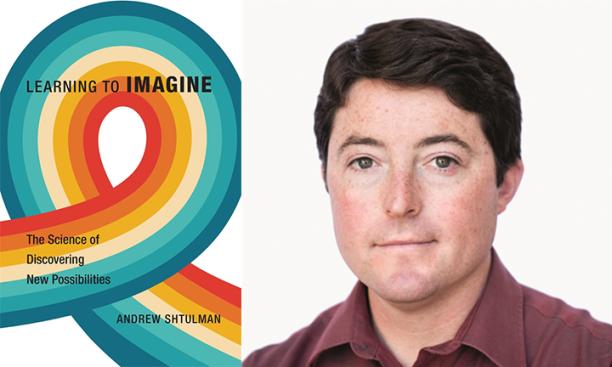
Children are often seen as innately imaginative, with that characteristic fading as they grow older. That belief is wrong, Andrew Shtulman ’01 argues in his new book Learning to Imagine: The Science of Discovering New Possibilities, due out Nov. 14.
“Children’s imagination is actually quite shallow, and imagination expands with education and reflection,” writes Shtulman, a professor of psychology at Occidental College. “There is no substitute for knowledge when it comes to expanding imagination.”
Shtulman has been studying how people perceive the world since he was an undergraduate. “What drove me to study psychology was my desire to understand why very smart people had such different beliefs about fundamental aspects of the world,” he says. Shtulman wrote his Princeton thesis on whether misunderstandings of evolution correlated with lack of acceptance of the theory, which led him to the study of intuition and its role in learning.
As a cognitive developmental psychologist, Shtulman says, “I study the development of the mind and mental processes. I specialize in conceptual development, and in that area I study how we think about what is and is not possible.”
Intuition was the subject of Shtulman’s first book, Scienceblind: Why Our Intuitive Theories About the World Are So Often Wrong, which was published in 2017 and, he says, “explores our homespun ideas about how the world works — intuitive theories — and their impact on how we learn and understand science.”
That topic was easier for him than the subject of his new book. “I’ve always felt I had a much better grasp on intuition than imagination,” he says. The latter “is a thornier topic, because people mean so many different things by imagination, and everyone’s common-sense views are contradicted by the empirical literature.”
Fundamentally, Shtulman believes, imagination is a learned skill rather than an inborn trait, and education strengthens rather than impedes its operation. “Children’s imagination is rather impoverished, and it’s not surprising because they know so little,” he says. “Imagination is fueled by knowledge.”
Children don’t produce work that is historically or culturally remarkable, Shtulman says. Instead, he adds, “Their paintings and Lego creations demonstrate that children have active imaginations but not extraordinary ones.” Small children, he writes in Learning to Imagine, are “highly skeptical of extraordinary ideas” absent prodding from adults and “prefer imitation to innovation in general.”
Even brilliant adults have trouble imagining situations very different from the ones they know. In his book, Shtulman quotes the physicist Lord Kelvin’s 1896 comment that “heavier-than-air-flying machines are impossible”; seven years later, the Wright brothers flew such a machine at Kitty Hawk.
Especially transformative ideas tend to be “communal and collaborative,” Shtulman writes, the product of exchanges among people deeply learned in a field. Readers who want to expand their own imaginations, he suggests in the book’s conclusion, “should engage with and learn from the collective knowledge of other people” — not the advice most readers would expect, he acknowledges.
“Adults underestimate how imaginative they are,” he says, “and we forget all the things we do that are grounded in our own sets of expertise.” Shtulman says he made that point in explaining his book to his mother. “You knit, and you quilt, and you create cards,” he told her. “You have so many years of experience — your products are very imaginative, but you don’t see them as such.”
